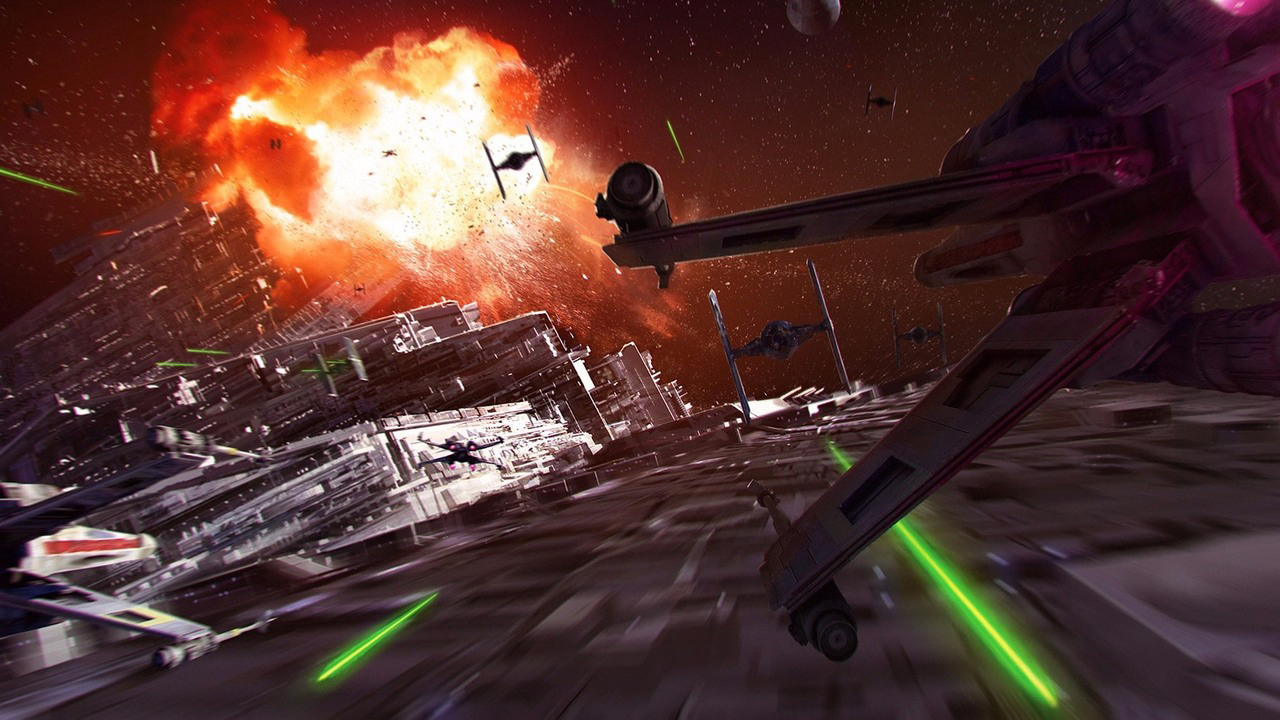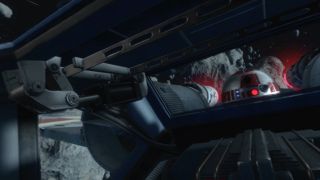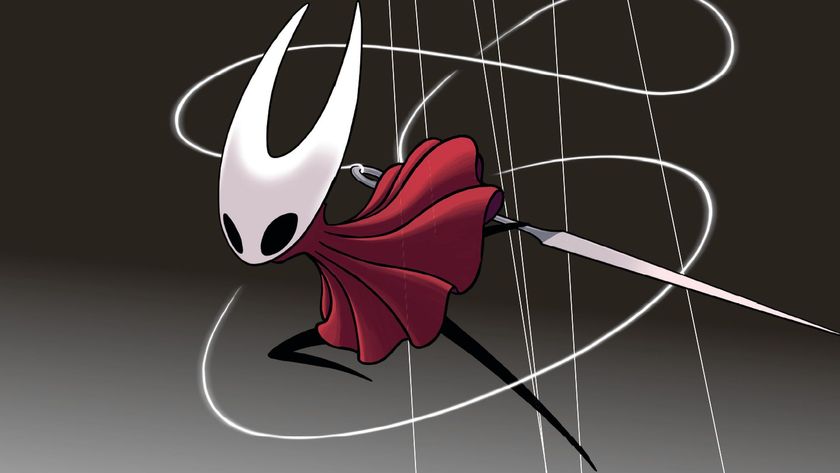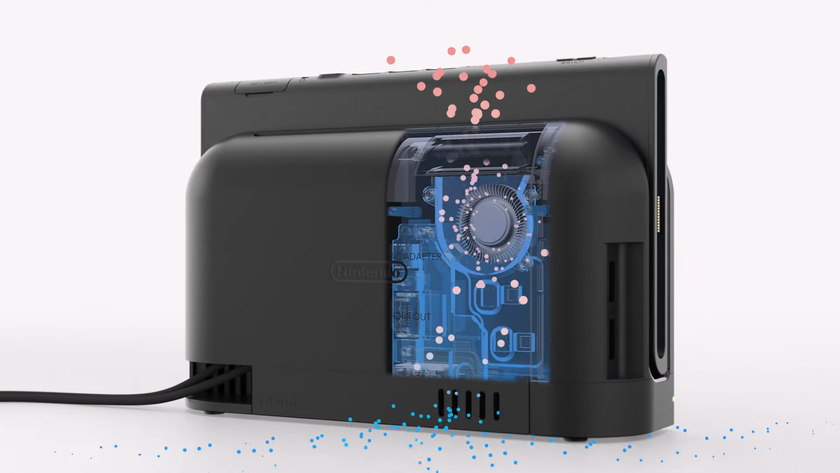Yes. Playing as an X-Wing pilot in VR is as amazing as you want it to be

When I was a kid, I watched Star Wars with my little brother. Repeatedly and avidly. We watched it over and over, always cherishing with particular glee the Deathstar run at the end of A New Hope. We pretended to be X-Wing pilots, and had our own (rather childish) call-signs for the unnamed squadron mates who never make it out of that deadly trench. We bonded over it, talked about it constantly, and wondered what it would really be like to be an X-Wing pilot. We still do, as mostly grown-up men. Ah, Andy, you’re such a sentimental guy, and what an obvious - dare we say it - unoriginal way to start a feature. Yeah, you’re maybe right, but the thing is I reckon I just described many of your childhoods. And if I did, you already know what I’m going to say next… X-Wing VR is the fulfilment of that fantasy, albeit without the actual destruction of a virtual Deathstar.
This is EA’s first entry into VR, and it’s a free download - due December 6 - for anyone who owns a copy of Star Wars Battlefront. It clocks in at around 15-20 minutes, and it’s a single story slice that places you in the flightsuit of a rookie X-Wing pilot. No, you can’t choose different starships or customise your character. It’s scant, and not endlessly replayable, although it has the production values of a modern blockbuster - there’s a story and it even has an original score.
What it really is, however, is 15 solid minutes of the most generous, satisfying fantasy-fulfilment you’re likely to get this side of stern VR porn. Even the title screen has a quick squeeze of your nostalgia gland, as you watch a fully rendered, life-sized AT-AT lumber past a Battlefront logo. You will be tempted to try and harpoon your way between its legs and shove a thermal detonator into its belly. Next up is… you’re still not in the game. You’re faced with a full-scale X-Wing, connected to a bunch of pre-flight equipment, and you’re free to just look at from a selection of angles. And I do this, for several minutes, inspecting every port, connection, and S-foil like an overly cautious father choosing his daughter’s first ‘safe-as-you-can-goddam-get-it’ second-hand car. Satisfied that I’ve scoured every inch of the exterior, I climb the ladder and sit in the cockpit.
There are loads of buttons. Those chunky buttons you get in sci-fi movies from the 70s, which flash and feel like they might stick if you jab them too hard with your finger. I press all of them. One activates the targeting computer, which whizzes past my left shoulder and gives me that hideous cross-hatch display that Luke - quite rightly - decides he doesn’t need in A New Hope. I had no idea there were so many buttons in the X-Wing cockpit, and later, when I’m speaking to the team who created the game, they explain why.
“We worked really closely with LucasFilm on the interior of the X-Wing, and there was definite back and forth,” explains Mark Bridges, Lead Designer on X-Wing VR Mission at Criterion. “We actually defined what most of the buttons in an X-Wing actually do - they’re canon now - because we needed to know, for example, which one was the S-foils and we had to define that.” Ooh, fancy. James Svensson, Producer adds: “Because we worked so closely with LucasFilm we actually had access to all the assets from the new movie, Rogue One, so we were able to use the latest version of the X-Wing, which appears in the film.”

So this is a marriage of the old and the new. It’s 70s sci-fi recreated with cutting edge 2016 tech, based on design from both a movie from 1977 and one that isn’t yet released. No wonder it feels so delightfully analogue when I press the launch button and arrive in the actual mission. I’ve jumped into the middle of a Rebel fleet. While it’s hardly buzzing with craft, I can steer my X-Wing around a couple of GR75 Medium Transports and a pair of EF76 Nebulon-B escort frigates. Yeah, I checked Wookiepedia. They’re the big ships you see during the battle over Endor during Return of the Jedi. Anyway, what strikes me about flying the X-Wing is that, while you feel in control, you get a great sense of the weight of the ship. Sure, weight is a none-issue in space, but you genuinely feel like you’re flying something, which is a difficult thing to convey in VR.
In fact, the cockpit and nose of the craft take up a substantial amount of your forward view, but this is necessary for a) realism and immersion, and b) to give you a strong sense of up and down, therefore reducing potential motion-sickness. There’s still plenty of space to stare at, and I spent time just messing about as my squadron leader very patiently encouraged me to get in formation for a hyperspace jump. See, we’re meant to be escorting a U-Wing (new craft for Rogue One) through an asteroid belt so it can deliver some ‘precious cargo’ to the Rebel fleet. Eventually I decide to join the rest of the squad and make the jump.
Sign up to the 12DOVE Newsletter
Weekly digests, tales from the communities you love, and more
We arrive in the middle of the asteroid field and my ‘training’ begins. Flight is on the right thumbstick, throttle on the left - just as it is in Star Wars Battlefront. As such, it’s real easy to just pick up and fly. The squadron leader explains what all the various functions of the craft are, and you can either use controller buttons to activate them (again, it’s identical to Battlefront) or look at and press the in-cockpit buttons. Yes. Although I didn’t do it in my demo, Bridges explains the coolest part of all this: “There’s an option in the settings to switch off all the HUD, so you can actually play it full role-play, only using the cockpit buttons. One of our pillars was accessibility: sure we wanted everyone who has played Battlefront and are familiar with the game to be successful, but we also wanted someone who had just been passed the VR headset and told “You’ve got to try this” to play too.” Shouting commands at your cat to “Cover me, I’m going in” are also optional, but recommended.

To aid with the immersion there’s pilot banter. I get told to shoot the little asteroids but avoid the big ones. Sure, it’s a thinly-veiled shooting tutorial, but it’s delivered with a humanity that keeps you fully immersed in the experience. After flying through the asteroid field with few incidents (I accidentally hit a small rock while craning my head back to look at my R2 unit, plus I go a little off course while messing about opening and closing my S-foils), we unite with the vulnerable U-Wing. Seems like an easy job - just get it clear of the asteroids so it can jump to hyperspace. What could possibly go wrong?
Naturally, that’s when the tie-fighters show up. Then the Star Destroyer. The first wave of enemies is designed to get you accustomed to dog-fighting. After that, it’s chaos, as space seems to fill with targets. It’s genuinely like being in a space battle from the movies. Now, either I’m awesome at this game or - more likely - the designers made it deliberately easy to shoot down enemies, but I’m soon zipping through space nailing multiple tie-fighters with ease. They either straight-up explode in a pleasing shower of fire and metal, or spin helplessly into an even more satisfying, delayed detonation. It’s tough to stress just how good this feels. You are, for all intents and purposes, a damn good X-Wing pilot, shooting down Imperial ships, helping your friends by “getting enemies off their six”, and escorting a mission-critical Rebel craft.
The only real criticism here - and I understand why this is the case - is that the action is slower than it appears in the movies. Simply, the X-Wing can’t move any faster because the player would feel out of control and likely vomit all over their expensive VR equipment. “For the original Star Wars movies, George Lucas looked a lot at bomber planes and other WW2 aircraft,” explains Svensson, when I ask about the slower, more analogue feeling controls. “That was how he originally briefed ILM - he cut together all the X-Wing sequences using footage from old WW2 movies, so everything about the X-Wing’s physics is all based on that sort of thing. Sure, in space it doesn’t make any sense to roll into a turn, for example, but it’s still a big part of that X-Wing fantasy fulfilment. And that’s a bit troubling in VR, but we worked hard to really give that sense of control and movement, while having the camera move in a very steady, predictable way.”

Flight is slow because it’s meant to be, because it needs to be. And this is such a minor criticism, especially as actual targeting is relatively quick, making it easy to shift from one target to the next before blasting them into space. The climax of the battle sees me first destroying a gun battery on the side of the Star Destroyer before eventually shoving a couple of photon torpedoes right up its bridge. With that satisfying explosion, the U-Wing escapes and my job is done.
The rest of my squadron congratulates me on a job well done, and chat amongst themselves, clearly relishing the fact that they’re just sat in an X-Wing, doing great things for the Rebellion. Perhaps we’ll have a blue-milk tonight over a few rowdy games of Holochess. Or, more likely, I’ll just drag them through the same mission over and over again like some intergalactic version of Groundhog Day. Because I love being an X-Wing pilot and, like my brother, they seem to enjoy it too.












